
How to Use sensor CO2: Examples, Pinouts, and Specs
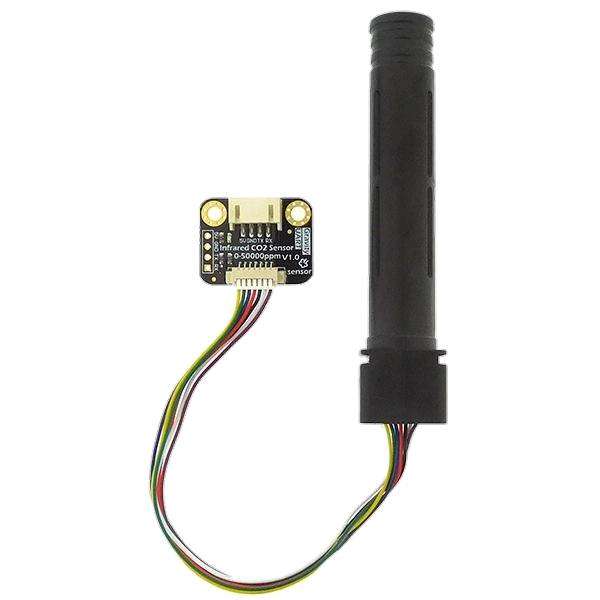
 Design with sensor CO2 in Cirkit Designer
Design with sensor CO2 in Cirkit DesignerIntroduction
The CO2 sensor is an electronic component designed to detect and measure the concentration of carbon dioxide (CO2) in the air. It is widely used in applications such as air quality monitoring, HVAC (heating, ventilation, and air conditioning) systems, greenhouses, and industrial safety systems. By providing real-time CO2 level readings, this sensor helps maintain healthy indoor environments and ensures compliance with safety standards.
Common applications and use cases include:
- Indoor air quality monitoring in homes, offices, and schools
- Ventilation control in HVAC systems
- Greenhouse CO2 level optimization for plant growth
- Industrial safety systems to detect hazardous CO2 levels
- Automotive air quality monitoring
Explore Projects Built with sensor CO2
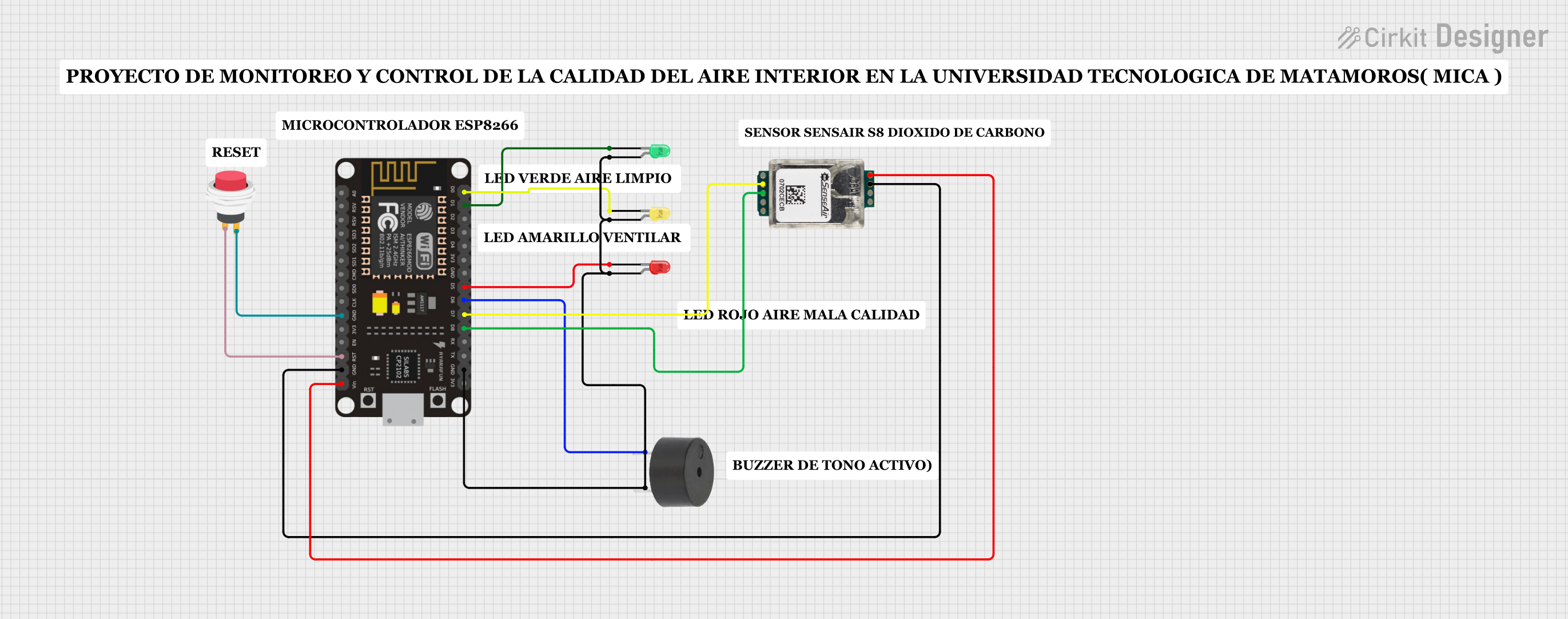
 Open Project in Cirkit Designer
Open Project in Cirkit Designer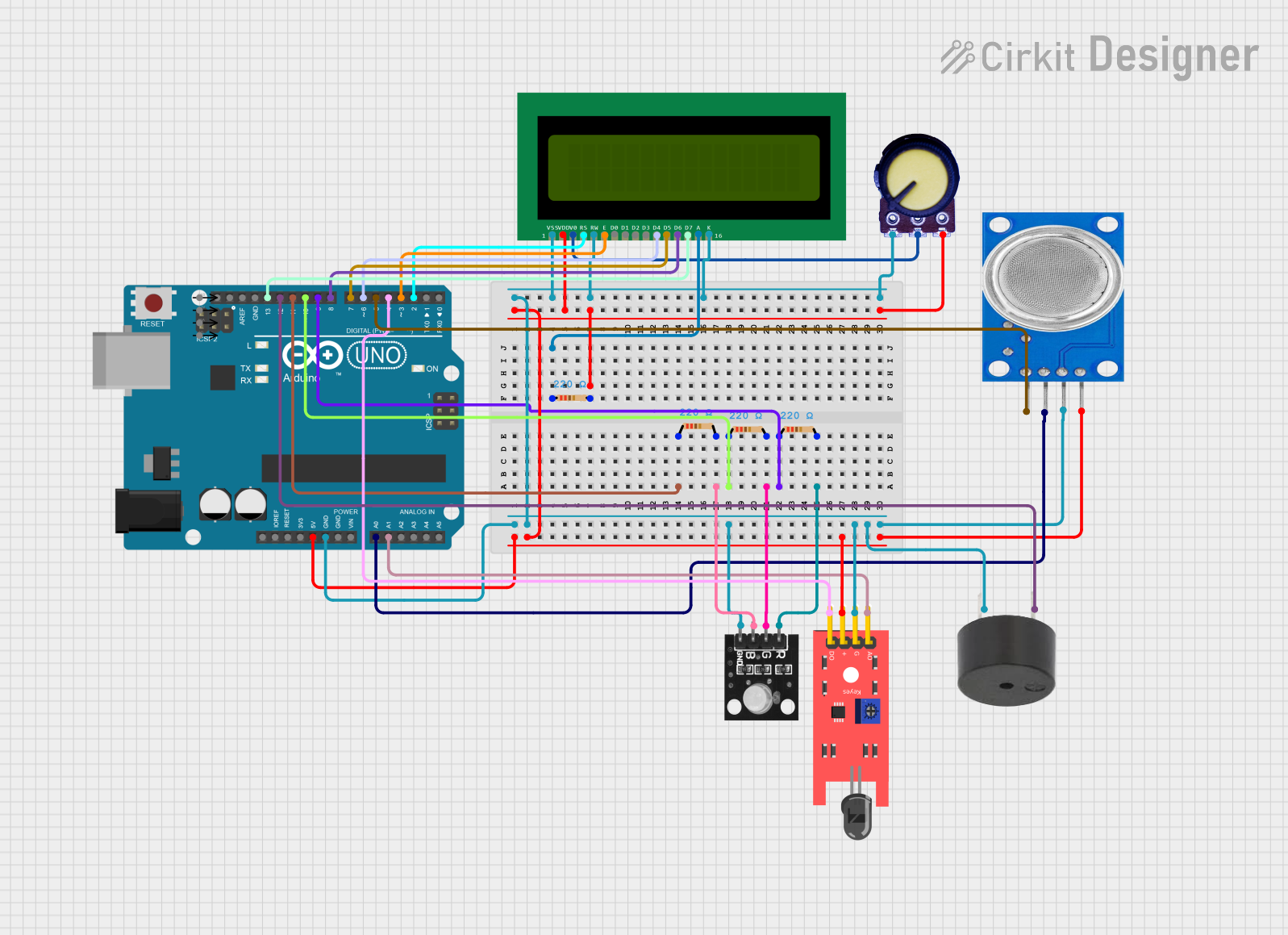
 Open Project in Cirkit Designer
Open Project in Cirkit Designer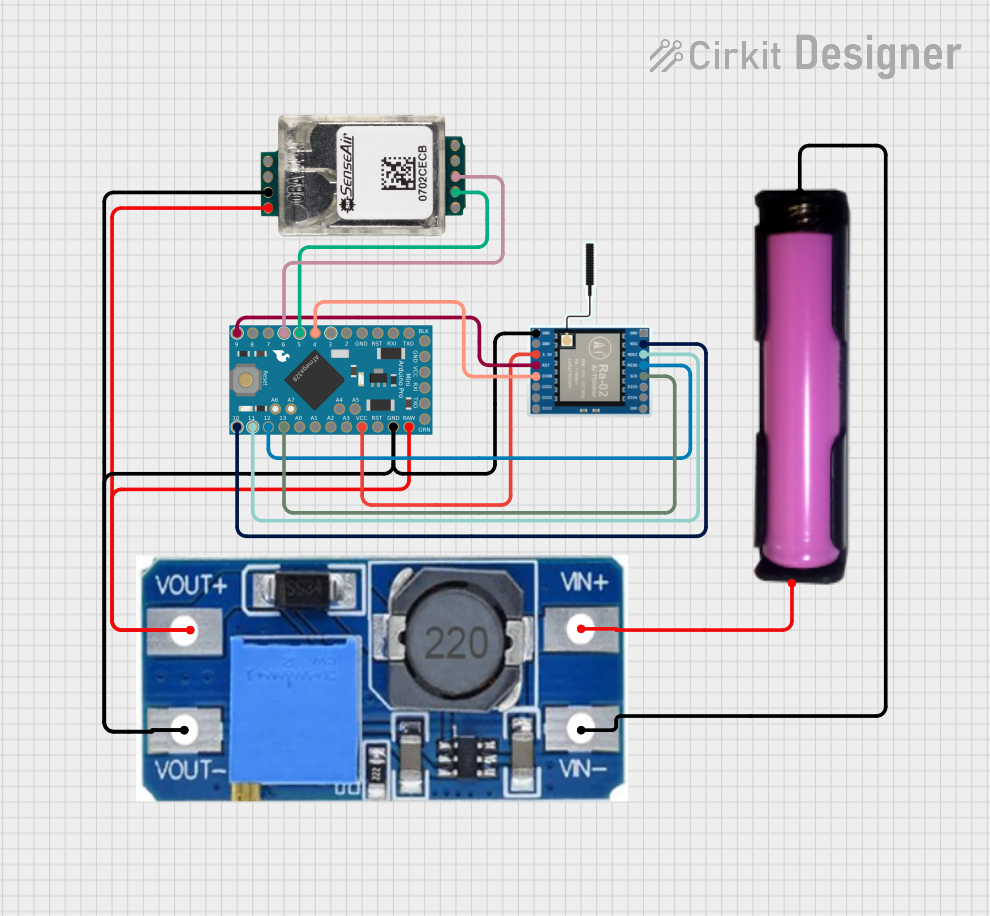
 Open Project in Cirkit Designer
Open Project in Cirkit Designer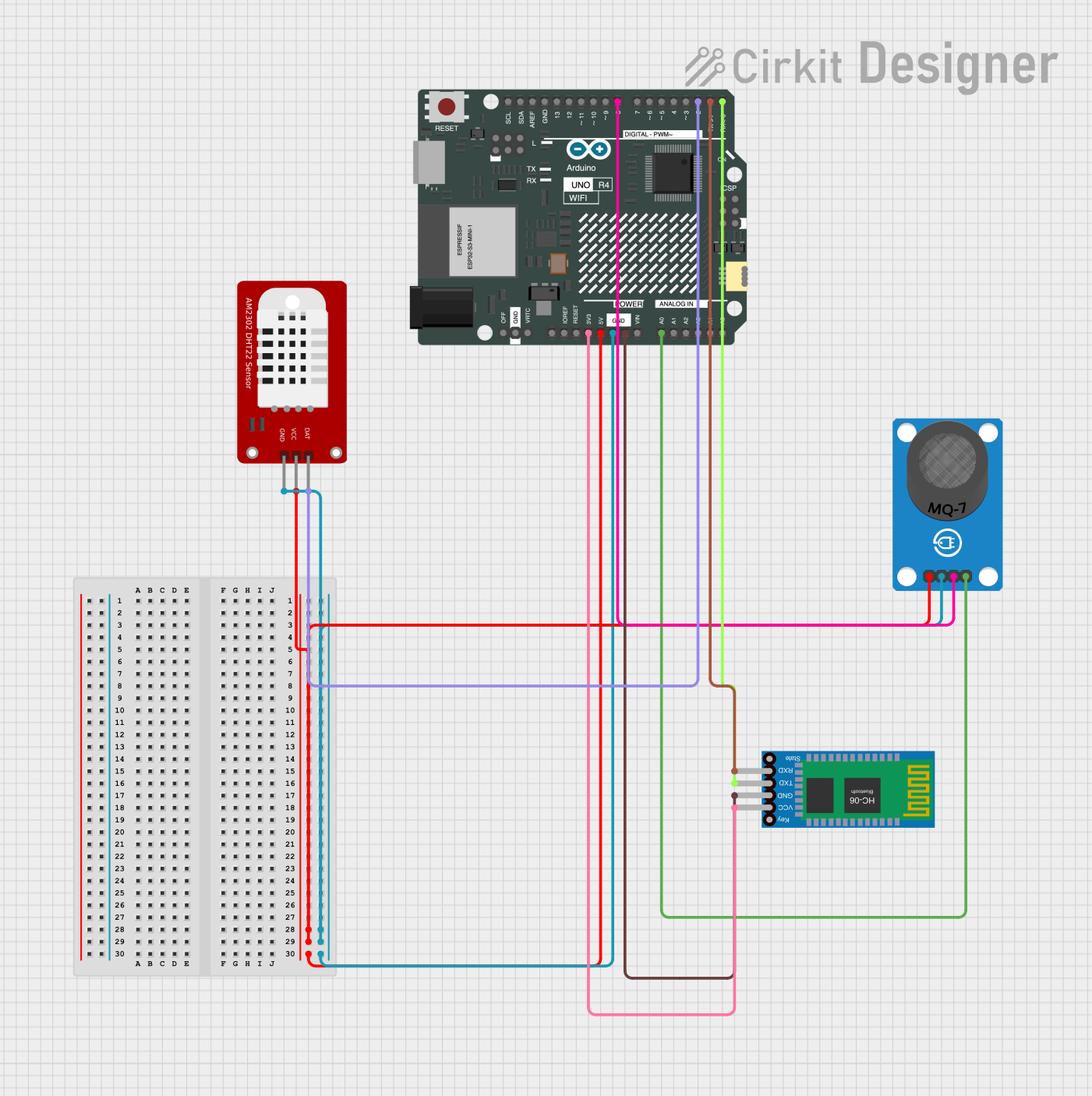
 Open Project in Cirkit Designer
Open Project in Cirkit DesignerExplore Projects Built with sensor CO2

 Open Project in Cirkit Designer
Open Project in Cirkit Designer
 Open Project in Cirkit Designer
Open Project in Cirkit Designer
 Open Project in Cirkit Designer
Open Project in Cirkit Designer
 Open Project in Cirkit Designer
Open Project in Cirkit DesignerTechnical Specifications
Below are the key technical details of the CO2 sensor:
| Parameter | Value |
|---|---|
| Measurement Range | 0 - 5000 ppm (parts per million) |
| Accuracy | ±50 ppm or ±3% of reading |
| Operating Voltage | 3.3V - 5V DC |
| Operating Current | < 50 mA |
| Output Signal | Analog voltage or digital (UART/I2C) |
| Warm-up Time | < 3 minutes |
| Operating Temperature | -10°C to 50°C |
| Operating Humidity | 0% - 95% RH (non-condensing) |
| Sensor Lifetime | > 5 years |
Pin Configuration and Descriptions
The CO2 sensor typically has the following pin configuration:
| Pin | Name | Description |
|---|---|---|
| 1 | VCC | Power supply input (3.3V - 5V DC) |
| 2 | GND | Ground connection |
| 3 | OUT | Analog output signal proportional to CO2 level |
| 4 | TXD | UART transmit pin for digital communication |
| 5 | RXD | UART receive pin for digital communication |
| 6 | SDA | I2C data line (optional, depending on model) |
| 7 | SCL | I2C clock line (optional, depending on model) |
Usage Instructions
How to Use the Sensor in a Circuit
- Power the Sensor: Connect the VCC pin to a 3.3V or 5V DC power source and the GND pin to ground.
- Choose Output Mode: Depending on your application, use either the analog output (OUT pin) or digital communication (UART/I2C pins).
- For analog output, connect the OUT pin to an analog input pin of your microcontroller.
- For UART communication, connect the TXD and RXD pins to the corresponding UART pins on your microcontroller.
- For I2C communication, connect the SDA and SCL pins to the I2C bus of your microcontroller.
- Read Data:
- For analog output, read the voltage from the OUT pin and convert it to a CO2 concentration using the sensor's datasheet.
- For digital communication, use the appropriate protocol (UART or I2C) to retrieve CO2 readings.
Important Considerations and Best Practices
- Warm-up Time: Allow the sensor to warm up for at least 3 minutes after powering it on to ensure accurate readings.
- Calibration: Periodically calibrate the sensor as per the manufacturer's instructions to maintain accuracy.
- Placement: Install the sensor in a location with good airflow and away from direct sunlight or heat sources.
- Power Supply: Use a stable power supply to avoid fluctuations in readings.
- Ventilation: Ensure proper ventilation around the sensor to prevent CO2 buildup near the sensing element.
Example Code for Arduino UNO
Below is an example of how to interface the CO2 sensor with an Arduino UNO using the analog output:
// CO2 Sensor Example Code for Arduino UNO
// Reads analog output from the sensor and calculates CO2 concentration
const int sensorPin = A0; // Analog pin connected to the sensor's OUT pin
float sensorVoltage; // Variable to store sensor output voltage
float co2Concentration; // Variable to store calculated CO2 concentration
void setup() {
Serial.begin(9600); // Initialize serial communication at 9600 baud
pinMode(sensorPin, INPUT); // Set sensor pin as input
}
void loop() {
// Read the analog voltage from the sensor
int sensorValue = analogRead(sensorPin);
// Convert the analog value (0-1023) to voltage (0-5V for Arduino UNO)
sensorVoltage = sensorValue * (5.0 / 1023.0);
// Convert voltage to CO2 concentration (ppm)
// Example formula: CO2 (ppm) = sensorVoltage * 1000
// Adjust the formula based on the sensor's datasheet
co2Concentration = sensorVoltage * 1000;
// Print the CO2 concentration to the Serial Monitor
Serial.print("CO2 Concentration: ");
Serial.print(co2Concentration);
Serial.println(" ppm");
delay(1000); // Wait for 1 second before the next reading
}
Troubleshooting and FAQs
Common Issues and Solutions
No Output or Incorrect Readings:
- Cause: Sensor not properly powered or connected.
- Solution: Verify the power supply voltage and check all connections.
Fluctuating Readings:
- Cause: Unstable power supply or poor ventilation.
- Solution: Use a regulated power supply and ensure proper airflow around the sensor.
Slow Response Time:
- Cause: Sensor not warmed up or obstructed airflow.
- Solution: Allow the sensor to warm up for at least 3 minutes and ensure unobstructed airflow.
Inaccurate Readings:
- Cause: Sensor not calibrated or exposed to extreme conditions.
- Solution: Perform calibration as per the manufacturer's instructions and avoid extreme temperatures or humidity.
FAQs
Q1: Can the CO2 sensor detect other gases?
A1: No, the CO2 sensor is specifically designed to detect carbon dioxide. It may not provide accurate readings for other gases.
Q2: How often should I calibrate the sensor?
A2: Calibration frequency depends on the application and environment. For most use cases, calibrating every 6-12 months is sufficient.
Q3: Can I use the sensor outdoors?
A3: The sensor is designed for indoor use. Outdoor use may require additional protection against moisture, dust, and extreme temperatures.
Q4: What happens if the sensor exceeds its measurement range?
A4: The sensor may saturate and provide a maximum reading. Prolonged exposure to high CO2 levels may affect its accuracy over time.